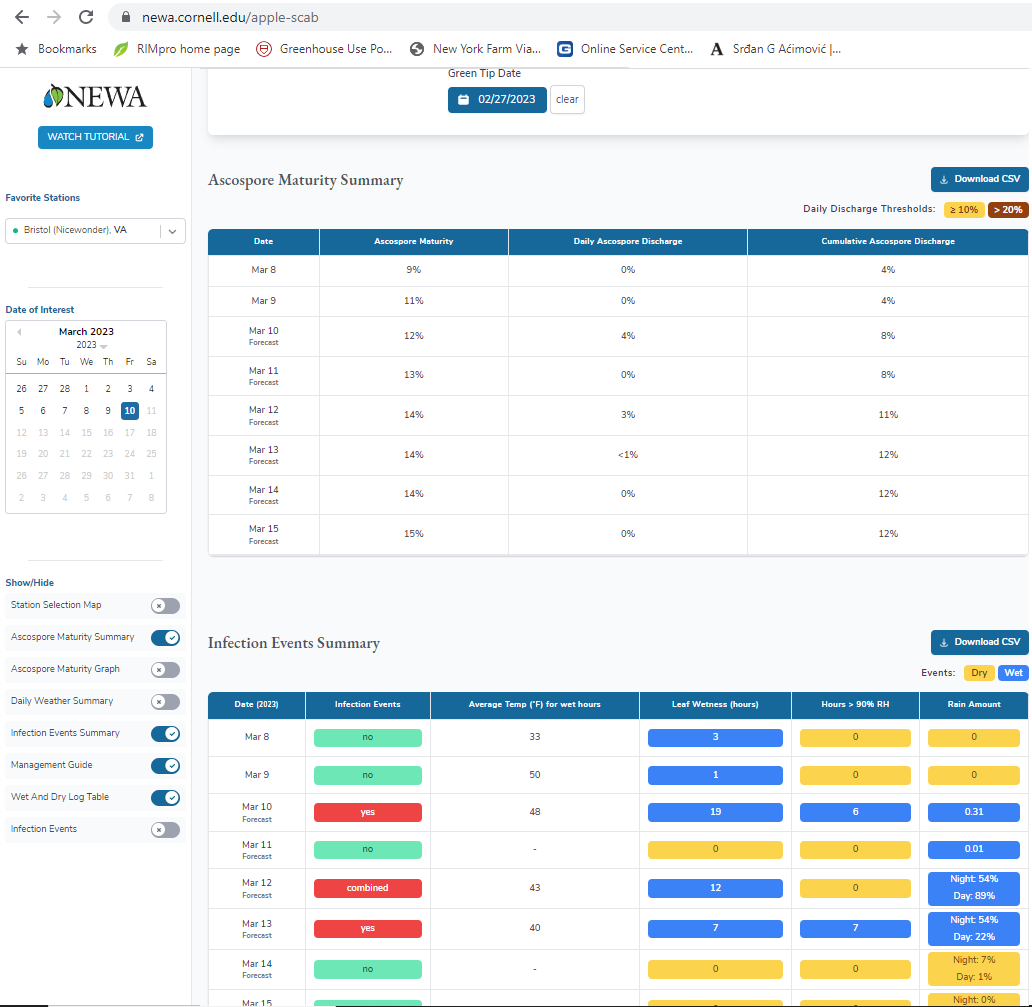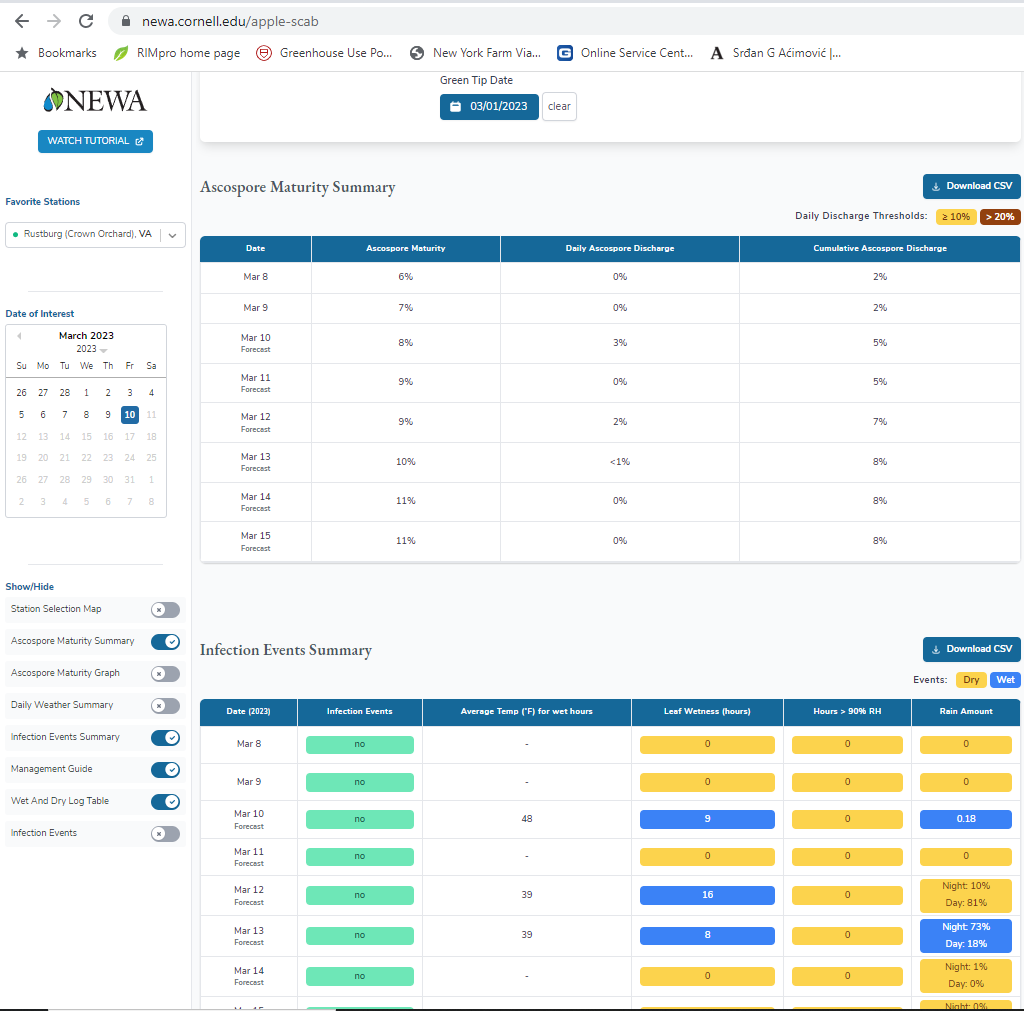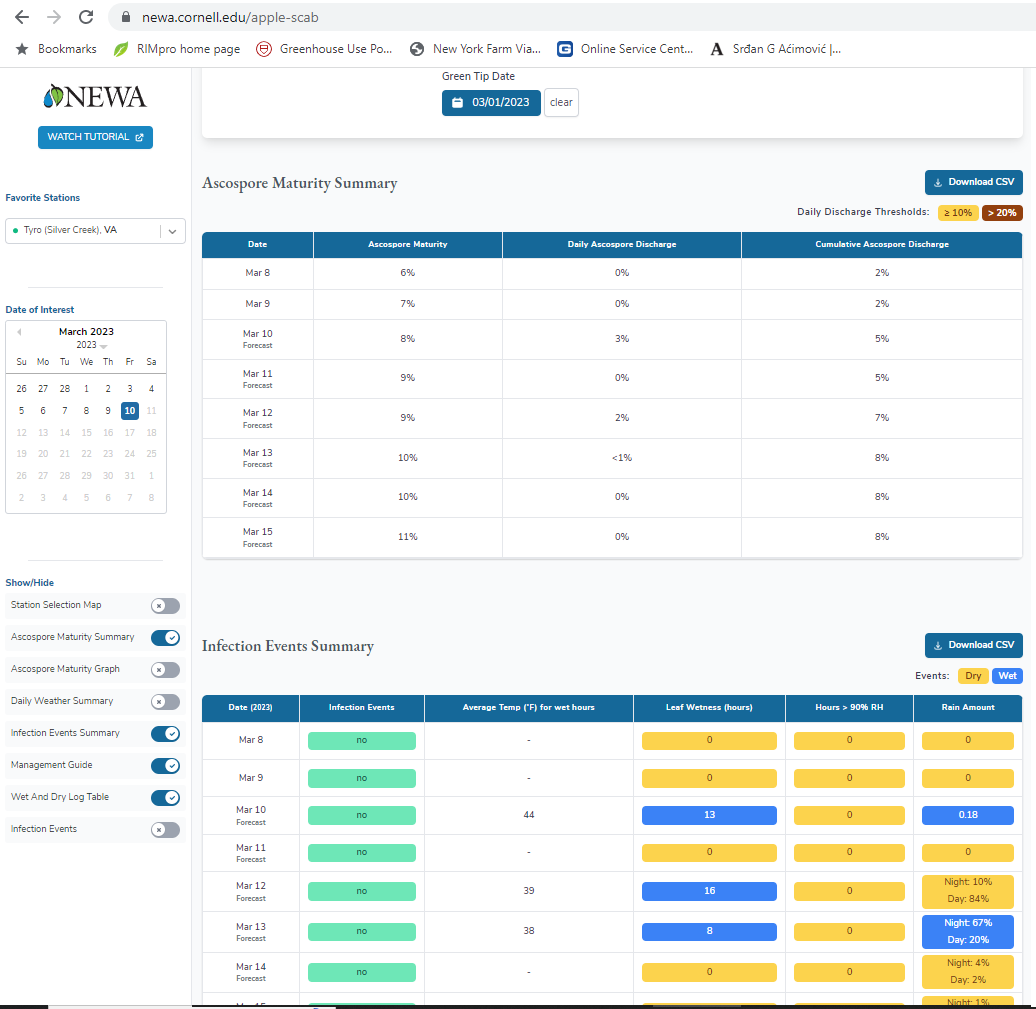Scab Infections Possible in South-East VA (Bristol) But It is Too Cold for Infections In South-Central, Central and North VA
Today, with the rains of 10 March predicting 0.23 inches in total, infections from apple scab fungus are possible in Bristol VA, and other locations in South-Eastern VA, on early apple cultivars susceptible to this disease. We are beyond the Green Tip (GT) in South-Eastern VA, probably at Half-Inch Green (HIG) or at Tight Cluster (TC). GT is the day at which on your earliest apple cultivar of interest, that is susceptible to scab, your trees reach 50% of fruit buds at green tip (when you randomly choose 100 flower buds across at least 10 trees in orchard and 50 out of 100 of buds are at GT). The same rule of 50% apple floral buds being at HIG or TC, means you reached HIG or TC, and so on. Apple Scab model in NEWA is the model you can access for free here: https://newa.cornell.edu/apple-scab and by finding and using closest station to your farm. Winter seems to be back in the rest of Virginia (South-Central, Central, and and Northern Virginia) and no infections from scab and rust at this cold weather are predicted by the model. Therefore, at this moment, no infections warrantying a single-site fungicide application(s) are predicted and you will be unnecessarily spending money on fungicides. For this period, the delayed dormant copper spray applications I recommended in my February 11th blog post available here will be effective like the one application of mancozeb 3 lbs/A. If any of the future infection predictions pop-up in the model(s), then the next fungicide application I would recommend would be Vangard, Scala, or Luna Tranquility tank mixed with mancozeb 3 lbs/A. After that single-site fungicide keep your spray interval at 5 to 7 days from the previous spray application. Stay tuned as we monitor both NEWA and RIMpro scab models, which we are trying to set up now in Central and South-Central VA (RIMpro already functions in Winchester). As the leaf mass starts to increase, keep in mind that besides the temperature and hours of leaf wetness, the amount of green tissue surface present at the time of infection on your trees, will be important for fungicide residue dilution, and thus the effectiveness. The more leaf tissue expands the higher the risk for infections will be as the gaps open in the residue you delivered. If you had apple scab symptoms last year in your orchard, you should count that you have high levels of carry-over apple scab fungus inoculum from the infections the previous year. Here are the outputs from NEWA on 10th March for Bristol (infections predicted 10, 12, 13 March), Rustburg and Tyro (no infections predicted) summing what I stated above:



